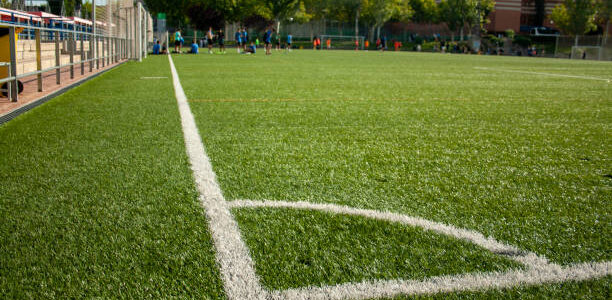BlogLine
PFAS chemicals playing tough on turf fields
5/7/24

By: Joshua G. Ferguson, James M. Mathew, and Noël Couch
In September 2022, Boston’s mayor Michelle Wu ordered no new artificial turf to be installed in city parks. The commonplace surface used for recreational activities and field sports is now coming under scrutiny for the Per-and-Poly Fluoroalkyl Substances (PFAS) that may be imbedded in its makeup. PFAS, which are also known as “forever chemicals,” include a broad class of manmade, highly stable chemicals that exhibit both grease- and water-repelling properties. Industry experts say these chemicals may be prevalent in the plastic found in turf. While turf fields are touted for their injury-reduction rates, there is a growing concern for a different type of injury on the field – allegations of a host of negative health effects caused by PFAS, including certain types of cancer. Mayor Wu’s primary concern of exposure to children is becoming widespread and the concern is now growing to include college athletes.
Estimates show there are more than 12,000 turf sports fields in the United States, many of them found on the campuses of higher education institutions. Attention now turns to athletes who may be exposed to PFAS when practicing or playing on university turf fields. However, the harmful effects of PFAS turf fields on college athletes have yet to be studied or confirmed. In other areas where research has been conducted, plaintiffs have asserted the harmful effects of PFAS as grounds for damages in thousands of cases being litigated across the country. The industries impacted have faced challenging legal battles.
As new information becomes available about a potential link between PFAS and turf fields, the higher education industry could be next to face the impacts of PFAS-related litigation. This is an emerging issue for higher education institutions that house turf fields on their campuses for student-athletes. The National Collegiate Athletic Association (NCAA), which is tasked with protecting the well-being of student athletes in addition to its role in regulating college sports, has not conducted research on the topic. As pending PFAS-related litigation is argued and resolved, such decisions could set a precedent for any claims arising within the higher education industry. This is a topic that institutions and their athletics departments, along with private facilities with turf fields, will want to follow closely. For more information, please contact Josh G. Ferguson at jferguson@fmglaw.com, James M. Mathew at james.mathew@fmglaw.com, or Noël Couch at noel.couch@fmglaw.com.
Share
Save Print
